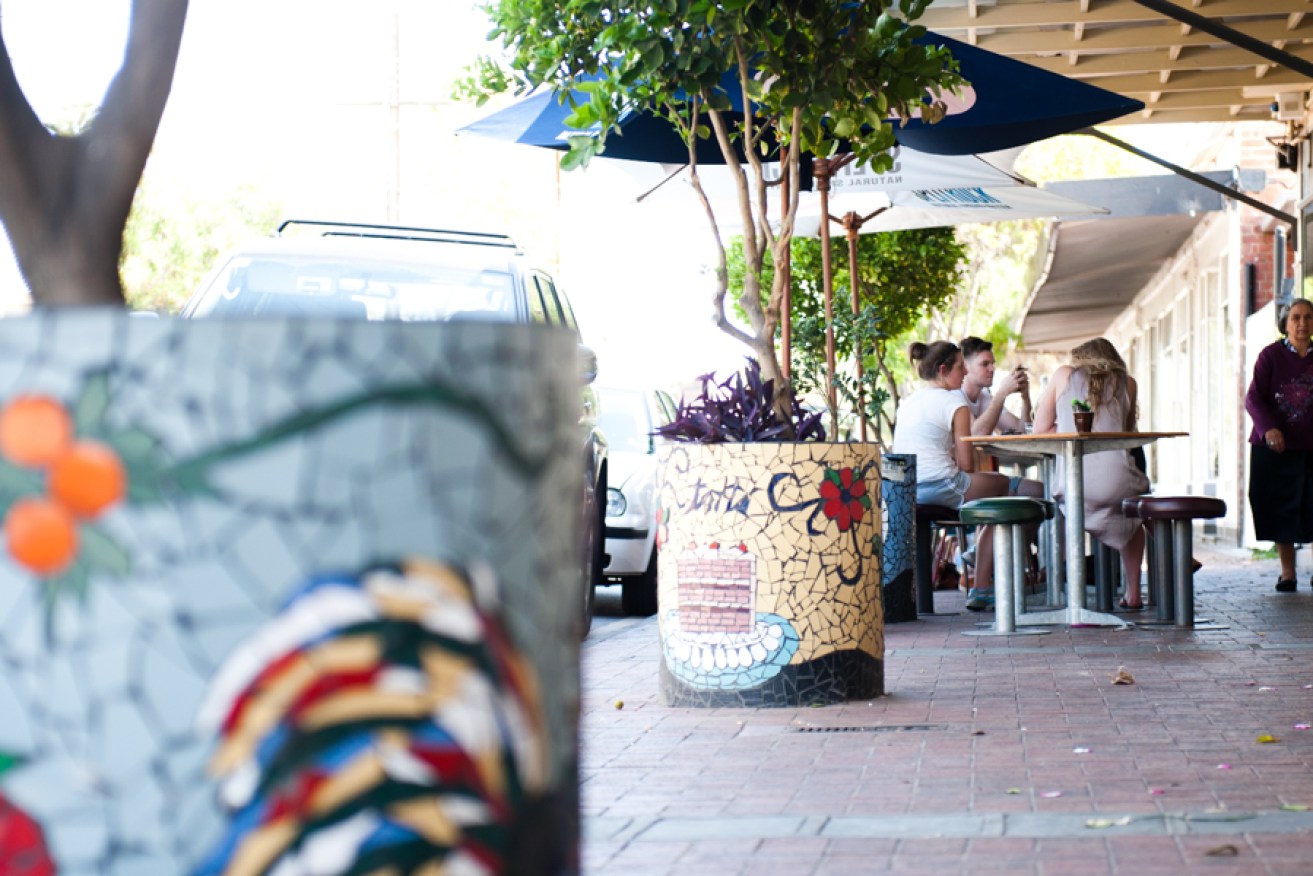How can a space constructed for a car be comfortable for a human being?
As soon as a street becomes uncomfortable for driving it immediately becomes more comfortable for walking.
This is why we need to rediscover the “high street”.
I remember every Saturday morning my Mother and I would travel into town and walk down the high street of Biloela in Central Queensland to buy some bread from the local bakery and meet with friends and family.
Very few shops had air conditioning so doors were wide open to the streets and in the morning you would escape the hot sun under the long line of awnings and by the afternoon you would switch to the other side of the street.
In winter we would do the opposite. Simple but effective.
This was all brought to my attention when I discovered Elizabeth St – the small but strong high street of Croydon.
Tucked away behind the freeways that are Port and South Road, I feel immediately at home in this informal, interactive community space.
Over 20 years, numerous high streets have been sunk by shopping centres turning our attention inwards and drawing our focus towards $9.99 FOR TODAY ONLY!!
These spaces are devoid of any external elements such as air, or light…
No air conditioning can provide a flow of air that feels as nice on your skin as a natural breeze; no light-bulb can provide light as warm or fresh as that of the first rays of sunlight on a winter’s morning.
The high street is a key interstitial space for this community.
Unlike shopping along a city-scaled mall, there is a clear connection from your front door to the public realm. People can wonder down and immerse themselves in the every day activities of their neighbours.
The high street in Croydon is a place that I regularly enjoy visiting and being a part of, even if it is on the other side of the city to me.
Emma, of Red Door Bakery, said she was overwhelmed with the support when her and her husband opened the store over 4 years ago. She attributes the area’s vibrant culture to its wide mix of people.
Emma spoke of seemingly small interventions that she believes have had a big influence on the blossoming of Elizabeth St.
Like many suburbs in Adelaide, there is a lovely awareness of trees lining the streets, but there are also small plants along the street that provide extra shade, at a level of planting more appropriate to the human scale.
It is this gradation of space and light that feels comfortable to the human body.
There is space to move, but opportunities to give way and wait for someone coming in the opposite direction; an opportunity to say hello as you squeeze through the shrubs that have overgrown onto the street (usually from a student share house – as happened with mine many times before.)
It is not a one size fits all policy.
Streets, suburbs and cities have differences that are engrained in their DNA; differences that require unique assessment and consideration.
But we can apply a framework anywhere to allows a more social community atmosphere to thrive.
All over the world cities are returning streets to people. In some cases people are reclaiming the streets themselves.
DIY Urban Design has taken off in many different forms.
Yarn bombing and Guerrilla gardening are worldwide initiatives that started with small groups of people wanting to improve their local streets.
Within Adelaide, we see Parklets taking over parking spaces and extending opportunities for people to inhabit and enliven our streets.
We are continually seeing the introduction of road signs saying ‘local traffic only,’ ‘slow down’ and the introduction of excessive speed bumps to stop local streets becoming the commuter’s shortcut.
These pragmatic solutions are helpful, but a greater focus on street and neighbourhood culture is called for; an approach which looks at reactivating the street so that a car slows down out of interest, rather than inconvenience.
What will you do to make your street a place to pause, rather than to pass?
– Katy Moir is a Graduate of Architecture at Troppo Architects.





